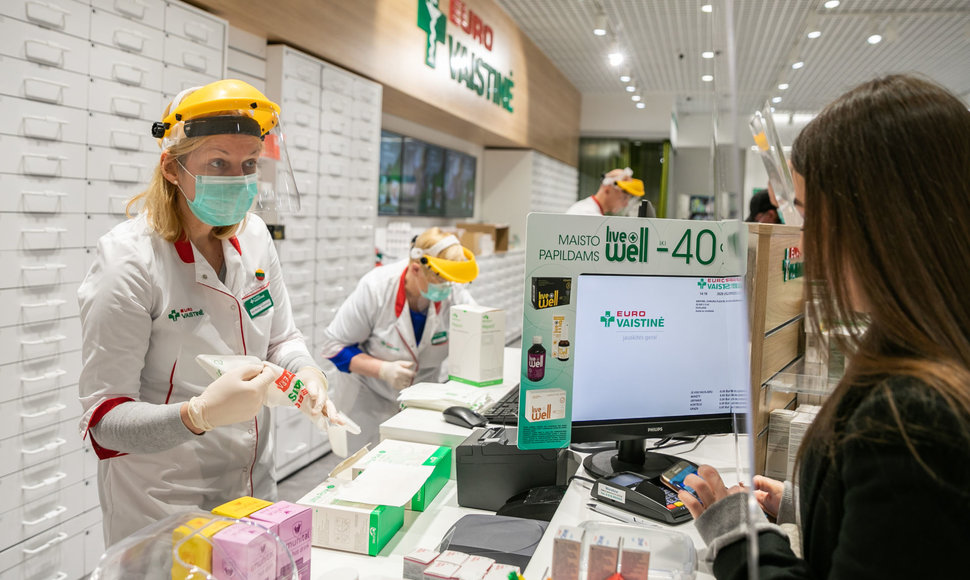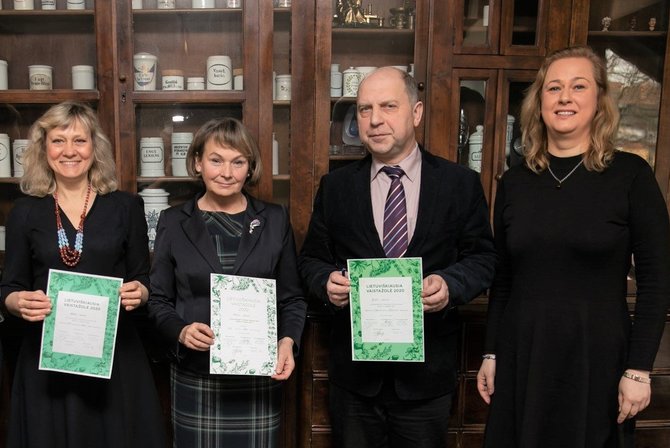A shortlist was drafted in cooperation with pharmacists featuring the most popular, most scientifically-proven, and historically Lithuanian medicinal herbs and plants, with specialists noting that there is no universal ‘medicinal plant,’ and no panacea.
“People’s health depends not only on the use of herbal medicines but also on a healthy lifestyle, environmental conditions, and mutual relations with their fellow humans. It is important to note Jurgis Ambraziejus Pabrėža – the founder of a healthy lifestyle, pharmacology and botanical science in Lithuania. As we mark the 250th anniversary of this scientist’s birth, the Seimas of the Republic of Lithuania has declared 2021 the year of J. A. Pabrėža,” explains Dr Ona Ragažinskienė, head of the Vytautas Magnus University Botanical Garden Science Department Medicinal and Spice Plants Sector.
According to Lithuanian Health Sciences (LSMU) Faculty of Pharmacology professor Dr Nijolė Savickienė, it is important for everyone to understand that no medicinal plant must be used continuously, and it is important to take into account one’s well-being as well as seasonality.
Director of LSMU Lithuanian Medicine and Pharmacy Museum Dr Tauras Antanas Mekas observes that the common nettle is a medicinal plant widely known in Lithuania since bygone times. “The common nettle is a companion for human beings,” the museum’s director notes, though point out that nettles also often flourish in former waste disposal sites, and so they should be collected with care, and in only designated areas.
The common nettle – a special medicinal plant
Eurovaistinė pharmacist Kristina Staivė says that the common nettle is a plant known well in society for its medicinal and nutritional properties, its vitamin content, and its capacity to be used for dyes due to being a post-winter plant used year-round. “The nettle accumulates numerous different micro and macro-elements, which sees it used for the treatment of anaemia, the weakness that is often felt in springtime. The nettle contains nutrients that help with the production of haemoglobin and erythrocytes, restore blood production and strengthen the blood,” the pharmacist explains.
The common nettle also stands out in that both parts that grow above and below ground are used for medical purposes. Nettle leaves are described in the European Pharmacopoeia, and treatments containing nettles are notable for their mild diuretic effects, which are associated with flavonoids and a source of potassium levels.
Furthermore, nettles are used in treatments for joint diseases, and osteoarthritis or rheumatic diseases. The scientific literature describes treatments made out of nettle leaves and roots as an effective means of treating benign prostatic hyperplasia – or benign prostate enlargement.
It is not advised to make use of nettles given increased blood clotting, and when used in larger quantities for an extended period of time, there is a risk of gastrointestinal disorders.
This medicinal plant is also used externally. According to the pharmacist, common concentrated nettle preparations or ethanol tinctures can aid in protecting the scalp and may improve hair structure.
According to the head of the Eurovaistinė communications department Laura Bielskė, these elections are an opportunity for society to become more familiar with the medicinal plants we are already aware of, but often make unsuitable use of.
“When organising the contest and evaluating the plants, aspects such as their proliferation across Lithuania, public awareness of and scientific research on them, and their safety and their historical role are all evaluated. After evaluating based on these criteria, the commission deliberated on which of the following could be the most Lithuanian medicinal plant out of the small-leaved lime, common nettle, chamomile, broadleaf plantain, wormwood and garlic. After taking into account the criteria and considering contemporary issues, the common nettle was chosen,” says Bielskė.













